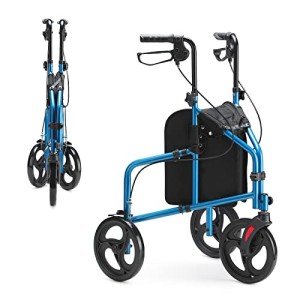
As people age, keeping mobility ends up being important for preserving self-reliance and lifestyle. For lots of seniors, walking aids such as walkers use a valued option to help them navigate their environment securely and with self-confidence. This article digs into the diverse world of senior walkers, including their types, benefits, use, and some often asked questions.
Walkers, typically described as walking frames, are mobility aids developed to supply support and balance for individuals who may have problem walking separately. They normally consist of a sturdy frame, grips for holding, and sometimes, wheels for ease of movement. Comprehending the various types of walkers available can assist seniors and their caregivers make educated choices.
| Walker Type | Description | Best For |
|---|---|---|
| Requirement Walker | A four-legged frame that needs to be raised to move forward. | Seniors needing optimum stability. |
| Two-Wheeled Walker | A walker with 2 wheels on the front for much easier mobility. | Those with minor balance problems. |
| Four-Wheeled Walker | A walker with 4 wheels, often consists of a seat and brakes. | Active seniors requiring mobility and pause. |
| Rollator Walker | A kind of four-wheeled walker that is lightweight and foldable. | Seniors who are more active and require minor support. |
| Platform Walker | A specialized walker with a platform for support, typically utilized in physical therapy. | People needing particular support for injuries. |
Senior walkers supply various benefits that considerably enhance the mobility and independence of elderly individuals. Here are a few of the most notable advantages:
When choosing a walker, numerous factors need to be thought about to ensure the best fit. Below are key points seniors or caretakers should assess:
To take full advantage of the benefits and decrease threats associated with walkers, proper use strategies are essential. Here are actions seniors ought to follow:
The rate of senior walkers can differ based on functions and materials used. Requirement walkers might cost as low as ₤ 30, while innovative designs with wheels and seats might range from ₤ 50 to ₤ 150.
Signs that a senior might need a walker can consist of frequent stumbling or losing balance, a current surgical treatment or injury affecting mobility, and preventing walking or engaging in social activities.
Yes, walkers can be a crucial part of physical therapy, helping seniors regain strength and dexterity through safe movement.
Walkers can be bought at medical supply stores, pharmacies, or online merchants. Some insurance coverage strategies might even cover part of the expense.
Routine maintenance involves checking for loose parts, ensuring brakes function correctly, and cleaning the frame to prevent rust or wear.
Senior walkers are an invaluable resource for preserving mobility and independence as one ages. With various types of walkers offered, it is vital for seniors and caretakers to consider personal requirements, usage, and comfort when choosing an appropriate walking aid. By encouraging safe mobility, walkers not just boost physical capabilities but likewise favorably impact social connections and mental wellness.
Through proper use and care, seniors can enjoy an active, interesting lifestyle, strengthened by the assistance of their walker. Comprehending the significance of mobility aids like walkers is basic in promoting boosted life quality for seniors facing mobility challenges.
Məlumat tapılmadı!
